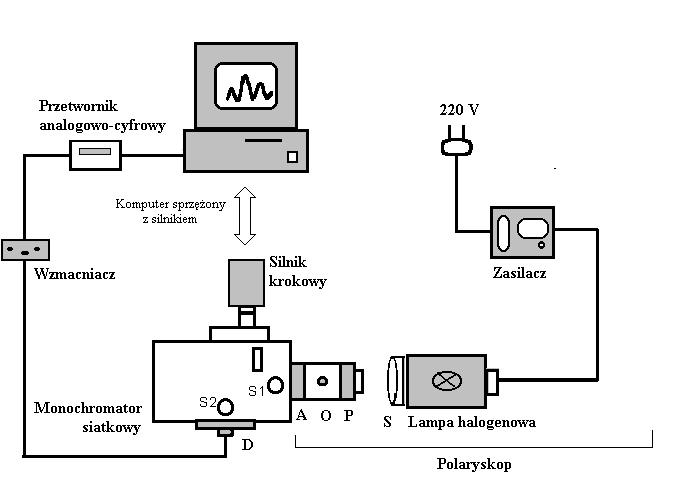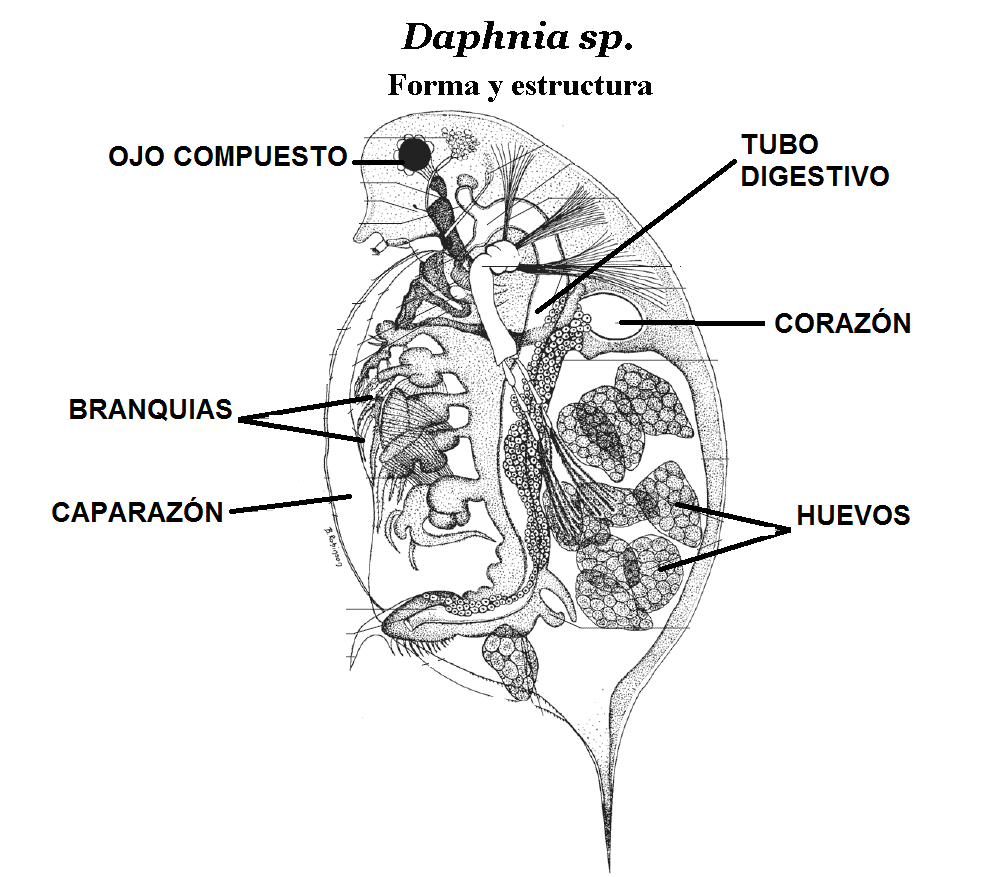A690 4 FISCAL NOTE ASSEMBLY NO 690 STATE OF
12 INTERNATIONAL MONETARY FUND FISCAL AFFAIRS DEPARTMENTA TORCINI – ADEMPIMENTI FISCALI DEL CURATORE FALLIMENTARE
DIRECȚIA GENERALĂ DE LEGISLAȚIE COD FISCAL ȘI REGLEMENTĂRI
MINISTERIO PÚBLICO FISCAL DE LA CIUDAD AUTÓNOMA DE
WATER COOP NAME YEAR OF ANNUAL RETURN FISCAL
(ANTETUL UNITĂŢII DE ÎNVĂŢĂMÂNT DENUMIRE ADRESĂ COD FISCAL) ……………………………………
A690 Fiscal Note
A690
FISCAL NOTE
ASSEMBLY, No. 690
STATE OF NEW JERSEY
214th LEGISLATURE
DATED: AUGUST 10, 2010
SUMMARY
|
Synopsis: |
Establishes permissive inferences related to conduct that serves as predicate to sex offenses against minors. |
|
Type of Impact: |
General Fund expenditure |
|
Agencies Affected: |
Judiciary, Department of Corrections |
|
Executive Estimate |
|||
|
Fiscal Impact |
Year 1 |
Year 2 |
Year 3 |
|
State Cost |
Indeterminate - See comments below |
||
|
|
|||
The Office of Legislative Services (OLS) concurs with the Executive estimate and adds that enactment of the bill may result in increased convictions for the offenses enumerated in the bill. The OLS notes that for every individual convicted and incarcerated under this bill, the ongoing operating expenses of housing a State sentenced prison inmate is $49,000 per year for the duration of that offender's incarceration.
The bill amends the luring and enticing law (N.J.S.A.2C:13-6) and the endangering the welfare of minors law (N.J.S.A.2C:24-4) to establish permissive inferences which are related to conduct which serves as a predicate to sex offenses against minors.
The Administrative Office of the Courts (AOC) states that although broadening the reach of the luring statute, and creating permissive inferences for luring and certain endangering the welfare of a child offenses may increase the number of cases and convictions for those particular offenses, the Judiciary cannot estimate the number of additional cases which may occur as a result of the provisions of this bill. As a result, the Judiciary cannot estimate with any confidence the impact that this bill might have on the Judiciary.
BILL DESCRIPTION
Assembly Bill No. 690 of 2010 amends the luring and enticing law (N.J.S.A.2C:13-6) and the endangering the welfare of minors law (N.J.S.A.2C:24-4) to establish permissive inferences which are related to conduct which serves as a predicate to sex offenses against minors.
Section 1 of the bill amends N.J.S.A.2C:13-6 to expand the definition of “electronic means” to include not only the Internet but also any electronic communication device.
Section 1 of the bill also amends N.J.S.A.2C:13-6 to establish the following permissive inferences concerning the luring and enticing of a child:
(1) Proof that a defendant agreed to meet with a child or a person whom the defendant reasonably believed to be a child without first taking reasonable steps to determine whether the other person was actually a child shall give rise to a permissive inference that the defendant believed the other person to be a child.
(2) Proof that a defendant traveled any distance either within this State, to this State, or from this State by any means, or attempted to do so, or caused another to do so or to attempt to do so, to meet with a child or a person whom the defendant reasonably believed to be a child without first taking reasonable steps to determine whether the other person was actually a child shall give rise to a permissive inference that the defendant believed the other person to be a child.
(3) Proof that a defendant 25 years of age or older who falsely represents his age as less than 25 years of age when communicating via electronic means with another person shall give rise to a permissive inference that the defendant believed the other person to be a child.
(4) Proof that the defendant transmitted by any means to a person who is a child or who the actor reasonably believes to be a child an image of any kind depicting a prohibited sexual act as defined in paragraph (1) of subsection b. of N.J.S.2C:24-4 or a simulation thereof, including but not limited to a depiction of a cartoon or graphic character or characters engaged in a prohibited sexual act, shall give rise to a permissive inference that the defendant acted with the purpose to commit a criminal offense with or against the child.
(5) Proof that a defendant violated N.J.S.2C:34-3 (obscene material) shall give rise to a permissive inference that, with respect to the victim of such violation, defendant acted with the purpose to commit a criminal offense with or against the child.
(6) Proof that the defendant transmitted by any means to a person who is a child or who the actor reasonably believes to be a child obscene material in violation of subsection b. of N.J.S.2C:34-3 shall give rise to a permissive inference that the defendant acted with the purpose to commit a criminal offense with or against the child.
(7) Proof that the defendant, with respect to another person who is a child or who the actor reasonably believes to be a child, directly or indirectly solicited a child or a person who the defendant reasonably believed to be a child to engage in sexual activities, discuss sexual conduct or intimate parts as that term is defined in N.J.S.2C:14-1, or provide personal sexual information shall give rise to an inference that the defendant acted with the purpose to commit a criminal offense against the child.
(8) Proof that the defendant directly or indirectly discussed sexual conduct or intimate parts with, or provided personal sexual information to, another person who is a child or who the actor reasonably believes to be a child shall give rise to an inference that the defendant acted with the purpose to commit a criminal offense against the child.
In addition, the bill provides that it shall not be a defense to a prosecution for luring or enticing a child that the defendant did not travel any distance or attempt to do so, or cause another to do so or to attempt to do so, to meet with a child or a person whom the defendant reasonably believed to be a child. The bill would also eliminate the affirmative defense that the actor did not know that the child was less than 18, nor would it be a defense that the actor believed that the child was 18 years of age or older even if such a mistaken belief was reasonable. Furthermore, this bill provides that a person who violates the luring statute would be strictly liable if the child is less than 18.
Section 2 of the bill amends subsection a. of N.J.S.A.2C:24-4 to provide the following permissive inferences concerning endangering the welfare of a child by any person who has the legal duty for the care of the child and who engages in sexual conduct which would impair or debauch the morals of a child:
(i) Proof that a defendant traveled any distance either within this State, to this State, or from this State by any means, or attempted to do so, or caused another to do so or to attempt to do so, to meet with a child or a person whom the defendant reasonably believed to be a child without first taking reasonable steps to determine whether the other person was actually a child shall give rise to a permissive inference that the defendant was attempting to engage in sexual conduct which would impair or debauch the morals of the child.
(ii) Proof that the defendant transmitted by any means to a person who is a child or who the actor reasonably believed to be a child an image of any kind depicting a prohibited sexual act as defined in paragraph (1) of subsection b. of N.J.S.A.2C:24-4 or a simulation thereof, including but not limited to a depiction of a cartoon or graphic character or characters engaged in a prohibited sexual act, shall give rise to a permissive inference that the defendant was attempting to engage in sexual conduct which would impair or debauch the morals of the child.
(iii) Proof that a defendant violated N.J.S.2C:34-3 shall give rise to a permissive inference that, with respect to the victim of such violation, defendant was attempting to engage in sexual conduct which would impair or debauch the morals of the child.
(iv) Proof that the defendant transmitted by any means to a person who is a child or who the actor reasonably believed to be a child obscene material in violation of subsection b. of N.J.S.2C:34-3 shall give rise to a permissive inference that the defendant was attempting to engage in sexual conduct which would impair or debauch the morals of the child.
(v) Proof that the defendant, with respect to another person who is a child or who the actor reasonably believes to be a child, directly or indirectly solicited a child or a person who the defendant reasonably believed to be a child to engage in sexual activities, discuss sexual conduct or intimate parts as that term is defined in N.J.S.2C:14-1, or provide personal sexual information shall give rise to an inference that the defendant was attempting to engage in sexual conduct which would impair or debauch the morals of the child.
(vi) Proof that the defendant directly or indirectly discussed sexual conduct or intimate parts as that term is defined in N.J.S.2C:14-1 with, or provided personal sexual information to, another person who is a child or who the actor reasonably believes to be a child shall give rise to an inference that the defendant acted with the purpose to commit a criminal offense against the child.
FISCAL ANALYSIS
EXECUTIVE BRANCH
The AOC states that according to data from the Judiciary’s automated Criminal Case Tracking System, PROMIS Gavel, during the 2009 court year a total of 627 defendants were convicted of luring or enticing a child pursuant to N.J.S.A. 2C:13-6 or of endangering the welfare of a child pursuant to N.J.S.A. 2C:24-4a. Of those 627 defendants, 594 pled guilty and 33 were convicted after a trial. The AOC notes that although broadening the reach of the luring statute, and creating permissive inferences for luring and certain endangering the welfare of a child offenses may increase the number of cases and convictions for those particular offenses, the Judiciary cannot estimate the number of additional cases which may occur as a result of the provisions of this bill. As a result, the Judiciary cannot estimate with any confidence the impact that this bill might have on the Judiciary.
OFFICE OF LEGISLATIVE SERVICES
The OLS concurs with the Executive estimate and adds that enactment of the bill may result in increased convictions for the offenses enumerated in the bill. The OLS notes that for every individual convicted and incarcerated under this bill, the ongoing operating expenses of housing a State sentenced prison inmate is $49,000 per year for the duration of that offender's incarceration.
|
Section: |
Judiciary |
|
Analyst: |
Anne Raughley Principal Fiscal Analyst |
|
Approved: |
David J. Rosen Legislative Budget and Finance Officer |
This fiscal note has been prepared pursuant to P.L.1980, c.67 (C.52:13B-6 et seq.).
(ARTICOLO 4) SCHEDA ANAGRAFICA ANNO CODICE FISCALEPARTITA IVA NOME
(NOMBRE DEL AYUNTAMIENTO) APROBACIÓN DEFINITIVA ORDENANZA FISCAL…… HABIENDO SIDO
1 OUTLINE OF THE OBSERVATIONS OF THE FISCAL 19961998
Tags: assembly bill, fiscal, state, assembly
- NAUKA O MATERIÁLU HTTPJAJAKNVUTBRCZ~JANIREK2DOK HTTPWWWPEDMUNICZWPHYFYZVLA HTTPMATERIALKARLOVMFFCUNICZPEOPLEJANECEK
- „SZÓL A FÜLEMÜLE!” –V KÁRPÁTALJAI NÉPZENEI ÉS NÉPTÁNC TEHETSÉGKUTATÓ
- THE DEVELOPMENT OF TAIJIQUAN STYLES BY AL DUNCAN
- ACTION POINTS AT RAN587E ACTION ID SWG ACTION
- AYUNTAMIENTO DEL VALLE DE IZAGAONDOA ORDENANZA REGULADORA DE LA
- SECRETARÍA DE INVESTIGACIÓN CREACIÓN ARTÍSTICA DESARROLLO Y TRANSFERENCIA DE
- WIELKOPOLSKI KOMENDANT WOJEWÓDZKI POLICJI W POZNANIU ZZP2380312013 POZNAŃ 20130508
- TRAMITACIÓN A SEGUIR PARA LA INSTALACIÓN DE ASCENSORES PASOS
- CBHPS COMITÊ DAS BACIAS HIDROGRÁFICAS DO RIO PARAÍBA DO
- ISTITUTO ISTRUZIONE SUPERIORE “ANTONIO PACINOTTI”
- NA0059804 APPRAISAL SUMMARY PROJECT ACQUISITION NO PROJECT NO PARCEL
- DETALIEREA DOCUMENTELOR NECESARE PENTRU DESCHIDERE CONT PERSOANE JURIDICE ŞI
- ANÀLISI D’INVESTIGACIONS EDUCATIVES LA INVESTIGACIÓ EN FUNCIÓ DELS DIFERENTS
- NORTHAMPTON VETERINARY CLINIC LLC COMPASSIONATE PROFESSIONAL VETERINARY CARE
- S Ø N D E R J Y S
- ПРОТОКОЛ №4 ОСУЩЕСТВЛЕНИЯ ЗАКУПОК СПОСОБОМ ТЕНДЕРА ЛЕКАРСТВЕННЫХ СРЕДСТВ ПРОФИЛАКТИЧЕСКИХ
- STUDIJŲ KOKYBĖS VERTINIMO CENTRAS VYTAUTO DIDŽIOJO UNIVERSITETO VEIKLOS VERTINIMO
- N EIGHBORHOOD SERVICES 281 N COLLEGE AV PO BOX
- INVENTARIO DE DOCUMENTOS LIBROS 1 PORTS DESIGNATED IN APPLICATION
- 2 CIFRAS ASTRONÓMICAS ES PROBABLE QUE NADIE HAGA TANTO
- IES PEDRO PEÑALVER EL ALGAR DEPARTAMENTO DE MATEMÁTICAS SEPTIEMBRE
- JAVNI RAZPIS ZA DODELITEV FINANČNIH SREDSTEV ZA OHRANJANJE IN
- DE CORRESPONDERENDE LEDEN VAN BEVAD LES MEMBRES CORRESPONDANTS DE
- SHORTTERM TRAINING RESOURCES FOR ABEESL LEARNERS SUMMER 2007 A
- REGISTRATION PERSONS WHO HAVE REGISTERED FOR THE INTERNATIONAL CONFERENCE
- WZÓR METAPLANU PROBLEM CHOROBY UKŁADU KRĄŻENIA JAK BYĆ POWINNO?
- DOCUMENTOS DE LICITACIÓN EMITIDOS EL PARA ADQUISICIÓN DE
- KONJUNKTIV II ZUSAMMENFASSUNG PRESENT SUBJUNCTIVE II WHAT
- PGOMA FEMENINA JDN SISTEMA DE COMPETICIÓN BENJAMIN FASE CLASIFICATORIAGRUPO
- VI JORNADAS INTERDISCIPLINARIAS DE ESTUDIOS AGRARIOS Y AGROINDUSTRIALES BUENOS
LENGUA Y LITERATURA CASTELLANA IES GÁDOR 5 SECUENCIACIÓN DE
TEMELJEM ČLANKA 44 ZAKONA O POSTUPANJU S NEZAKONITO IZGRAĐENIM
POILSIO PERTRAUKĖLĖS PRATIMAI 1 AKIŲ AKOMODACIJA STEBĖKITE DAIKTĄ
 SECRETARÍA ACADÉMICA ÁMBITO DE ACCIÓN CURRICULUM ASESORÍA Y PLANEACIÓN
SECRETARÍA ACADÉMICA ÁMBITO DE ACCIÓN CURRICULUM ASESORÍA Y PLANEACIÓN ZA TRENUTNU OBJAVU AMCHAM ODRŽAO DOGAĐANJE „KONGRESNI TURIZAM KAO
ZA TRENUTNU OBJAVU AMCHAM ODRŽAO DOGAĐANJE „KONGRESNI TURIZAM KAO UNIVERSIDAD AUTÓNOMA DE SAN LUIS POTOSÍ FACULTAD DE CONTADURÍA
UNIVERSIDAD AUTÓNOMA DE SAN LUIS POTOSÍ FACULTAD DE CONTADURÍA NOME KOMMUNE HÅNDBOK SIST ENDRET NOV 2013 VEDTATT
NOME KOMMUNE HÅNDBOK SIST ENDRET NOV 2013 VEDTATTWYKAZ DRÓG POWIATOWYCH W POWIECIE ŁAŃCUT LP NR DROGI
NZQA UNIT STANDARD 27360 VERSION 3 PAGE 4 OF
 SPRACHENZENTRUM DER FH WIESBADEN KURZBESCHREIBUNGEN SPRACHKURSE FRANZÖSISCHSS 06 GEISENHEIM
SPRACHENZENTRUM DER FH WIESBADEN KURZBESCHREIBUNGEN SPRACHKURSE FRANZÖSISCHSS 06 GEISENHEIM ENTPEPARLAMENTO EUROPEOENTPE 1999 2004 COMMISSION{AGRI}COMISIÓN DE AGRICULTURA Y DESARROLLO
ENTPEPARLAMENTO EUROPEOENTPE 1999 2004 COMMISSION{AGRI}COMISIÓN DE AGRICULTURA Y DESARROLLO 114 ПРАВИТЕЛЬСТВО РОССИЙСКОЙ ФЕДЕРАЦИИ ПОСТАНОВЛЕНИЕ ОТ 21 ДЕКАБРЯ 2011
114 ПРАВИТЕЛЬСТВО РОССИЙСКОЙ ФЕДЕРАЦИИ ПОСТАНОВЛЕНИЕ ОТ 21 ДЕКАБРЯ 2011FORJANDO UNA IDENTIDAD EL SERMÓN FORJANDO UNA IDENTIDAD ES
69 E DETAILSOF THE PROCUREMENTARRANGEMENTSINVOLVINGINTERNATIONALCOMPETITION FOR GHANA
 INSTRUKCJA ROBOCZA DO ĆWICZENIA 6 POMIAR RÓŻNICY DRÓG OPTYCZNYCH
INSTRUKCJA ROBOCZA DO ĆWICZENIA 6 POMIAR RÓŻNICY DRÓG OPTYCZNYCH TRABAJO PRÁCTICO EN ECOLOGÍA EXPERIMENTO DE CRECIMIENTO POBLACIONAL EN
TRABAJO PRÁCTICO EN ECOLOGÍA EXPERIMENTO DE CRECIMIENTO POBLACIONAL EN N O DE RECLAMO REQUISITOS PARA PAGO DE RECLAMOS
N O DE RECLAMO REQUISITOS PARA PAGO DE RECLAMOSCÓMO LLEGAR AL PARQUE DE POLVORANCA EN TRANSPORTE PRIVADO
 PRZEWODNIK PO USŁUGACH URZĘDU MIASTA I GMINY W MIKOŁAJKACH
PRZEWODNIK PO USŁUGACH URZĘDU MIASTA I GMINY W MIKOŁAJKACH RED DE EXCELENCIA SOBRE POSICIONAMIENTO Y NAVEGACION EN
RED DE EXCELENCIA SOBRE POSICIONAMIENTO Y NAVEGACION EN